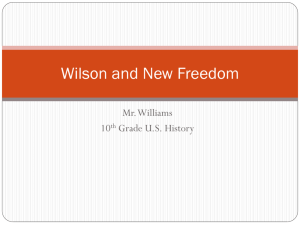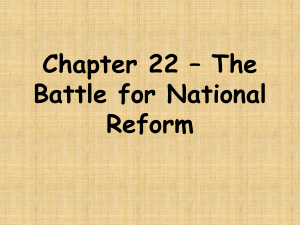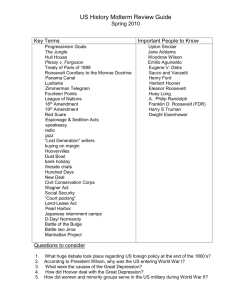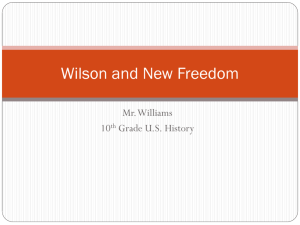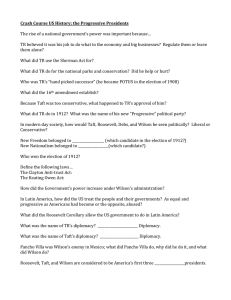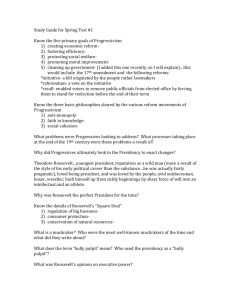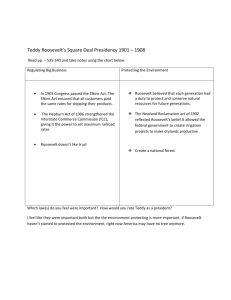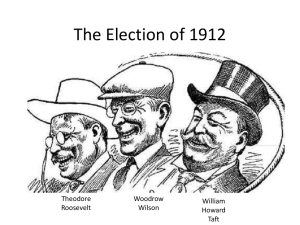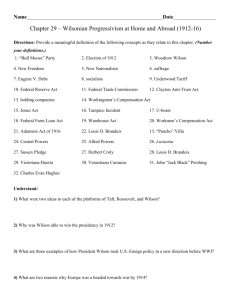study guide
advertisement
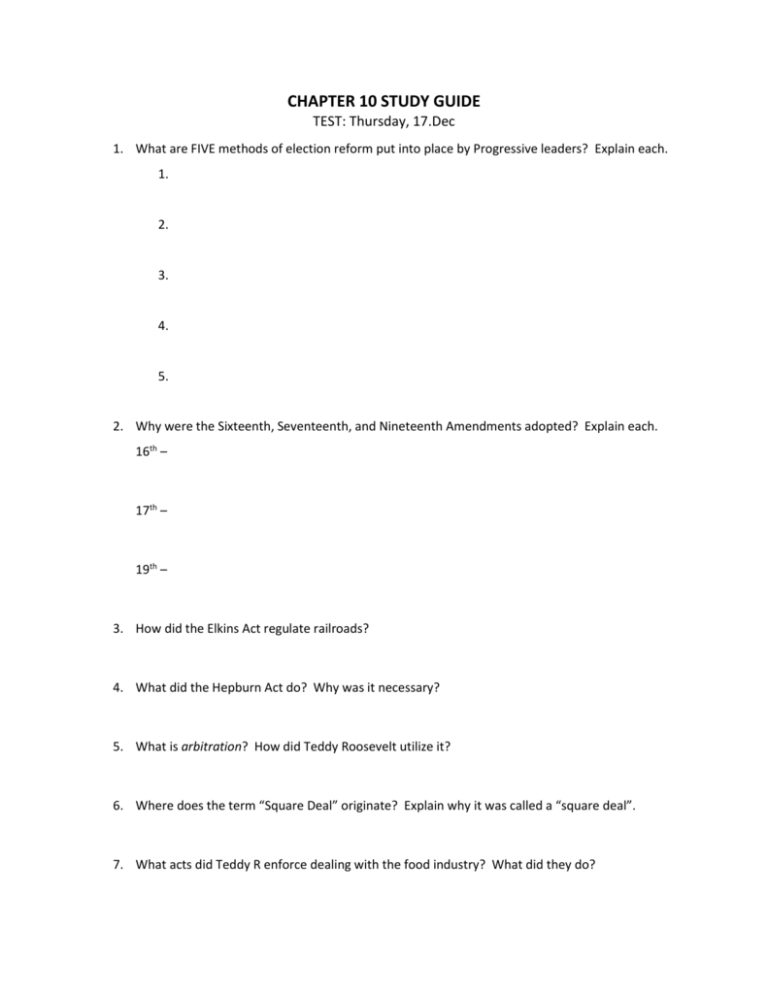
CHAPTER 10 STUDY GUIDE TEST: Thursday, 17.Dec 1. What are FIVE methods of election reform put into place by Progressive leaders? Explain each. 1. 2. 3. 4. 5. 2. Why were the Sixteenth, Seventeenth, and Nineteenth Amendments adopted? Explain each. 16th – 17th – 19th – 3. How did the Elkins Act regulate railroads? 4. What did the Hepburn Act do? Why was it necessary? 5. What is arbitration? How did Teddy Roosevelt utilize it? 6. Where does the term “Square Deal” originate? Explain why it was called a “square deal”. 7. What acts did Teddy R enforce dealing with the food industry? What did they do? 8. Who is Upton Sinclair? Explain his significance. 9. What Act does Roosevelt pass to preserve natural lands? 10. Who takes office in 1908? 11. What does the Mann-Elkins Act do? 12. Why did Roosevelt re-run for election in 1912? 13. How did Wilson manage to win the 1912 election without the majority vote? 14. Explain the purpose of Wilson’s “New Freedom” platform. 15. Define tariff. What did the Underwood Tariff Act do? 16. How did Wilson reform the banking system? 17. Explain the Clayton Antitrust Act. 18. What is the Federal Trade Commission? 19. Identify and explain the THREE different labor reforms enacted (put in place) by Wilson. 20. What did the Keating-Owen Child Labor Act do? Why was it eventually repealed (thrown out)? 21. When did women gain the right to vote? (year of ratification) What state had one of the toughest battles for women’s suffrage?
